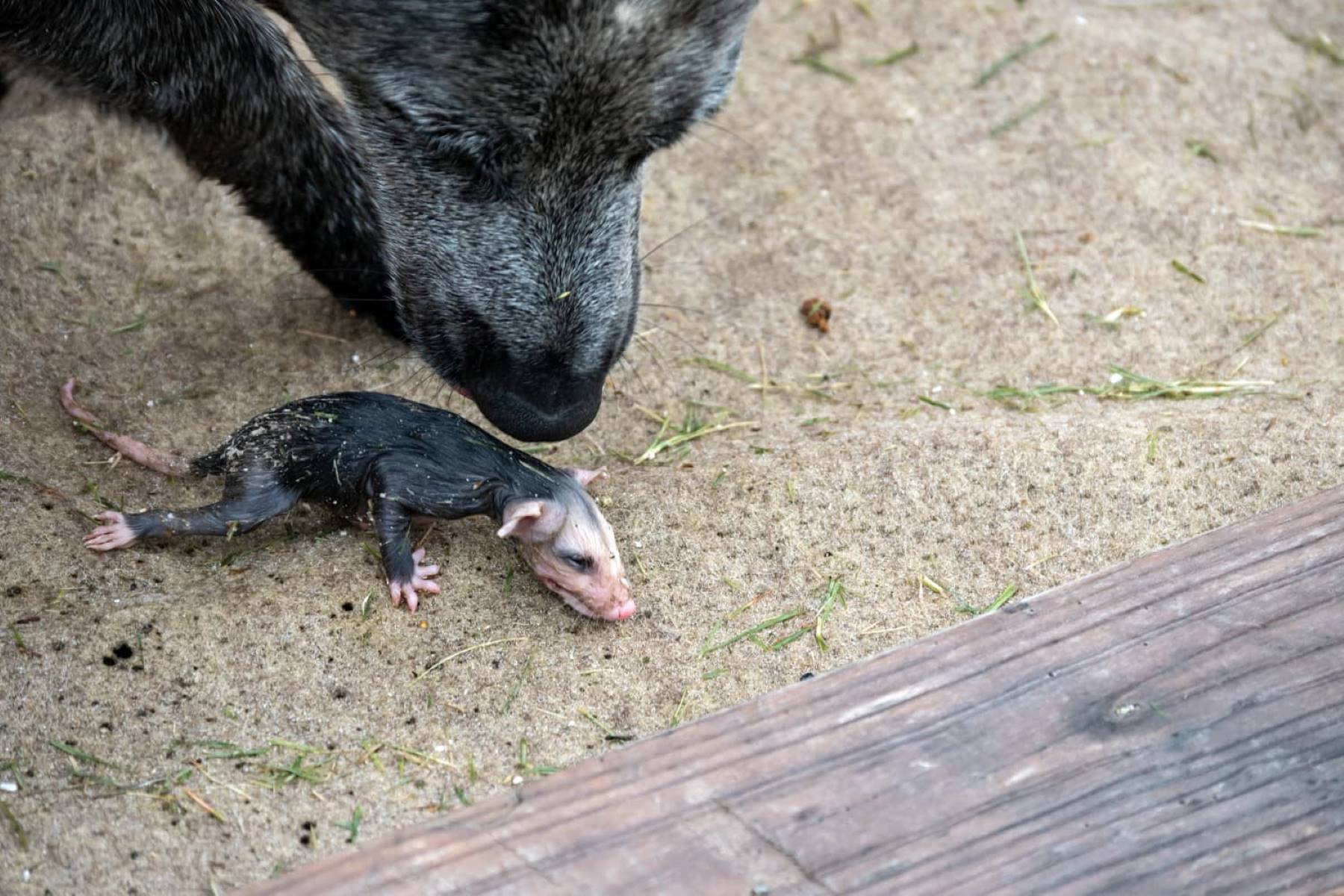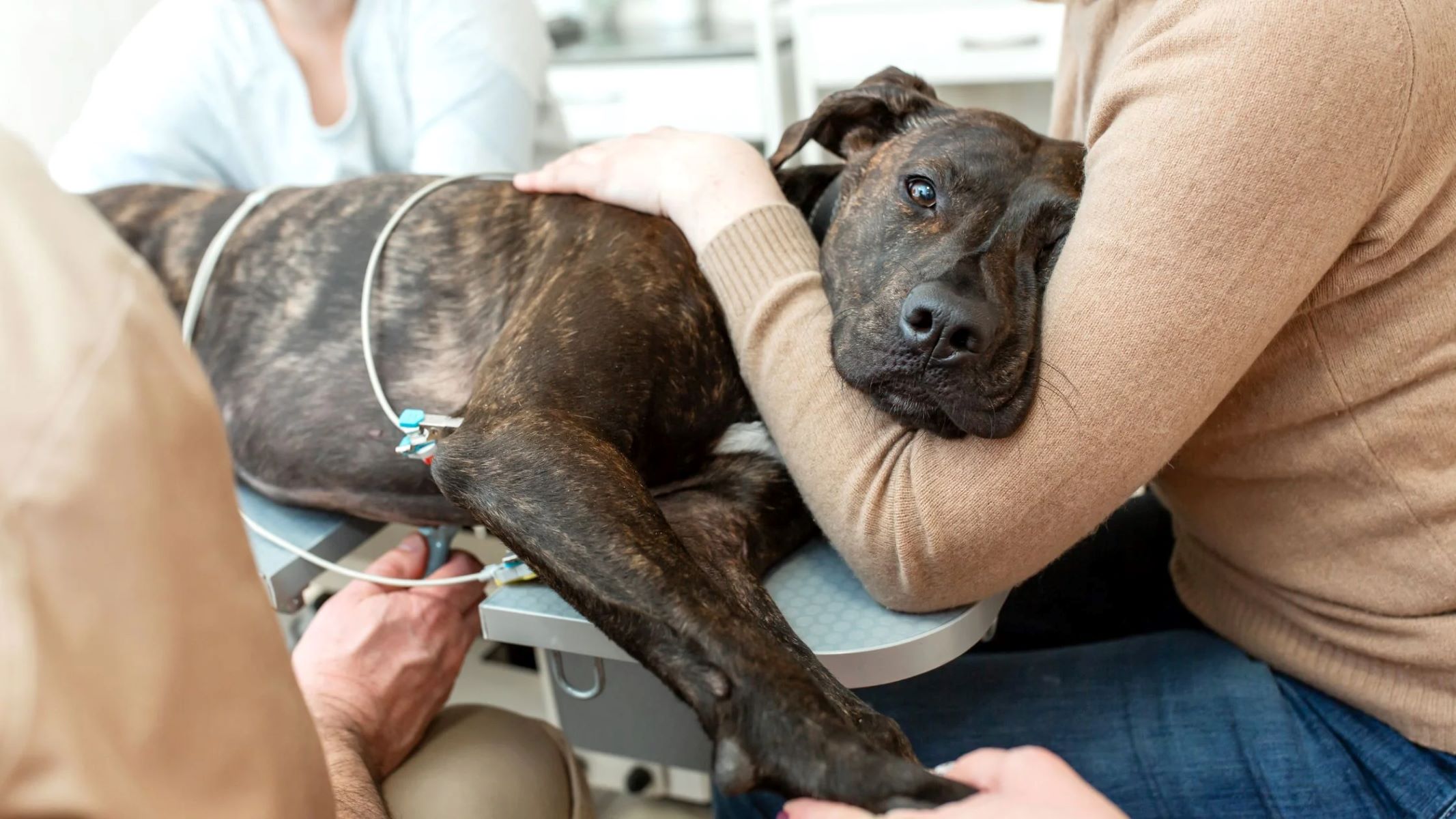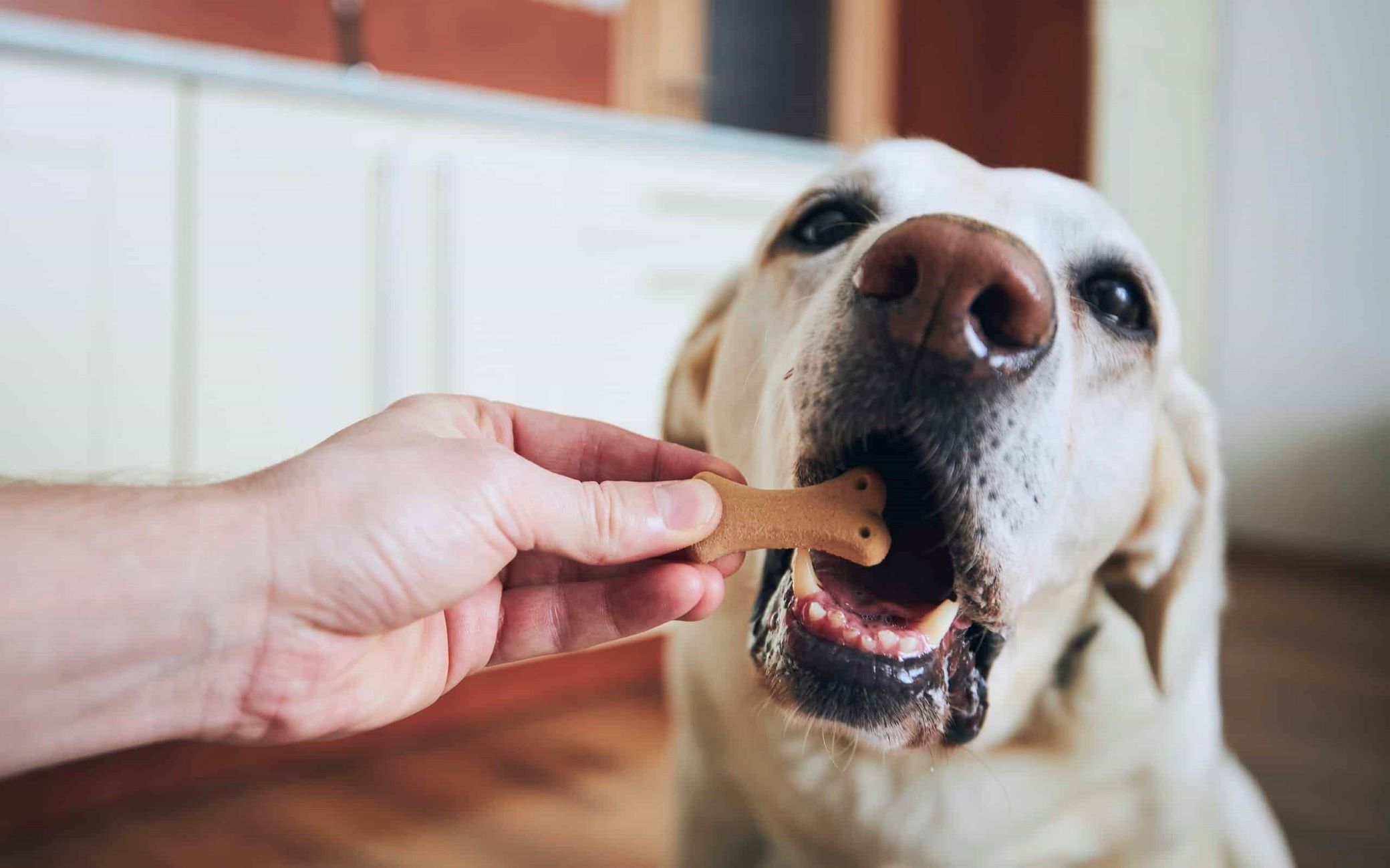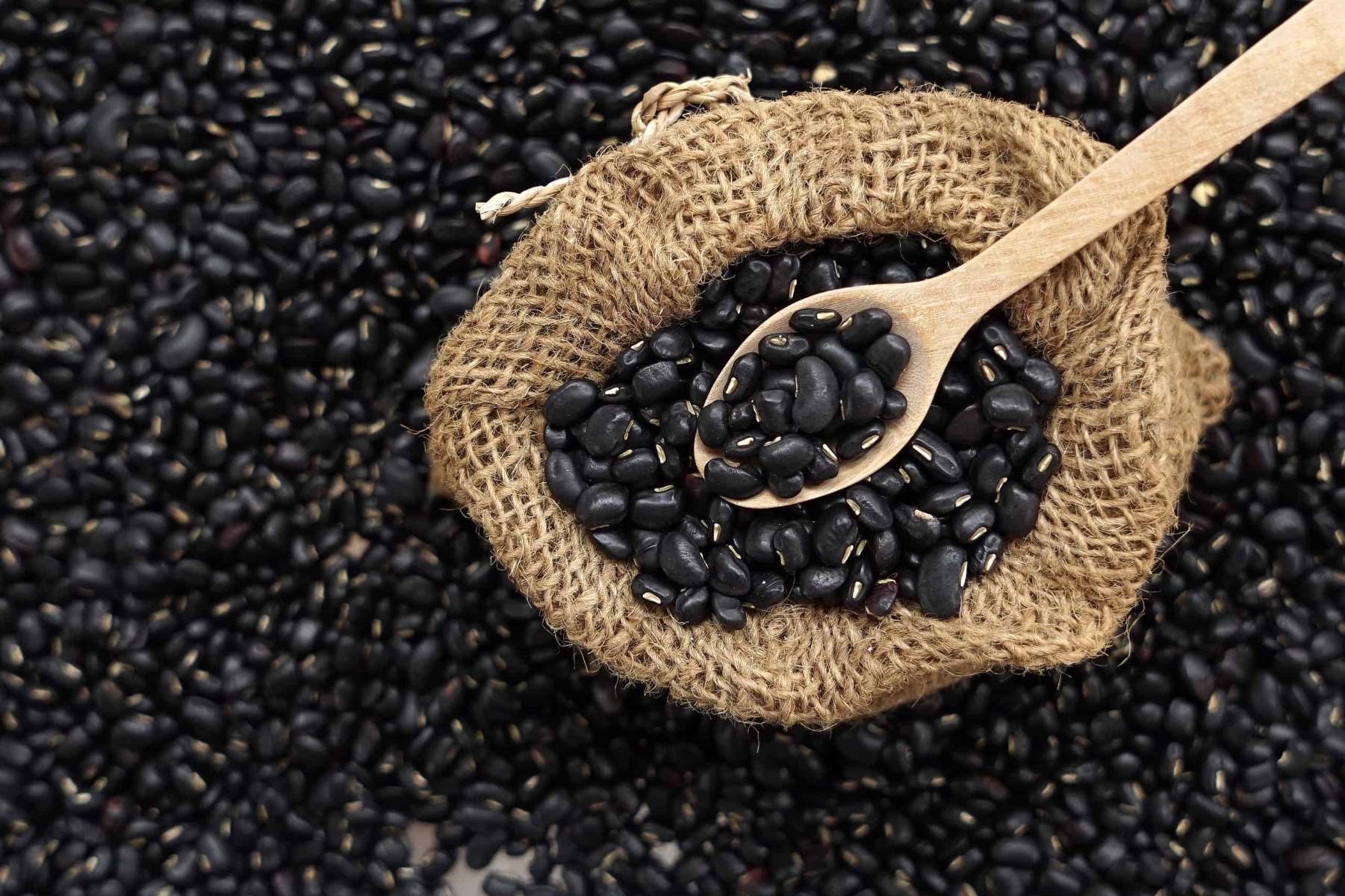Home>Health and Wellness>Shocking Truth: Oreo Cookies Spell Disaster For Dogs!


Health and Wellness
Shocking Truth: Oreo Cookies Spell Disaster For Dogs!
Published: February 12, 2024
Discover the shocking truth about how Oreo cookies can be disastrous for your dog's health and wellness. Learn how to keep your furry friend safe.
(Many of the links in this article redirect to a specific reviewed product. Your purchase of these products through affiliate links helps to generate commission for Regretless.com, at no extra cost. Learn more)
Table of Contents
Introduction
Many of us have experienced the irresistible temptation of indulging in a pack of Oreo cookies. The iconic black and white sandwich cookies with their creamy filling are a beloved treat for countless people around the world. However, what may come as a shock to many pet owners is that these delectable snacks can spell disaster for their beloved canine companions.
While the dangers of chocolate consumption for dogs are widely known, the specific risks posed by Oreo cookies are often overlooked. It's crucial for dog owners to understand the potential harm that these seemingly innocuous treats can pose to their furry friends. In this article, we'll delve into the toxic ingredients in Oreos, the symptoms of chocolate poisoning in dogs, and what to do if your dog consumes these cookies. Additionally, we'll explore preventive measures to safeguard your pet from accidental ingestion.
By shedding light on this critical issue, we aim to raise awareness and equip dog owners with the knowledge needed to protect their pets from the potential hazards of Oreo cookies. Let's embark on this eye-opening journey to safeguard the well-being of our beloved canine companions.
The Danger of Chocolate
Chocolate, a beloved delight for humans, holds a perilous secret when it comes to our canine companions. Theobromine, a stimulant found in chocolate, poses a significant threat to dogs. While humans can easily metabolize theobromine, dogs process it much more slowly, allowing it to build up to toxic levels in their system.
The severity of the danger varies depending on the type of chocolate. Dark chocolate contains the highest concentration of theobromine, followed by semisweet and milk chocolate. White chocolate, with its low theobromine content, poses minimal risk in comparison. It's essential for dog owners to recognize that even a small amount of chocolate can have detrimental effects on a dog's health.
When a dog ingests chocolate, the theobromine can lead to a range of symptoms, including vomiting, diarrhea, rapid breathing, increased heart rate, seizures, and in severe cases, even death. The toxic effects of theobromine can manifest within 6 to 12 hours of ingestion and may persist for up to 72 hours.
Understanding the potential harm of chocolate is crucial for dog owners, as it enables them to take swift and informed action in the event of accidental ingestion. By being aware of the dangers posed by chocolate, pet owners can implement measures to prevent their dogs from accessing any chocolate-containing products, including the seemingly innocent Oreo cookies.
The next section will delve into the specific toxic ingredients in Oreos and their potential impact on dogs, shedding light on the hidden risks that these popular cookies pose to our furry companions.
The Toxic Ingredients in Oreos
Oreo cookies, with their irresistible combination of dark chocolate wafers and sweet, creamy filling, hold a perilous secret for our canine companions. The two primary toxic ingredients in Oreos that pose a threat to dogs are chocolate and high levels of sugar.
-
Chocolate Content: The cocoa in Oreo cookies contains theobromine, the same toxic compound found in chocolate. As mentioned earlier, theobromine can have severe adverse effects on dogs, ranging from gastrointestinal distress to potentially fatal outcomes. Even though the theobromine content in Oreo cookies may be lower than that in pure chocolate, it still presents a risk to dogs, especially when consumed in significant quantities.
-
High Sugar Content: In addition to the dangers of chocolate, the high sugar content in Oreos can also be harmful to dogs. Excessive sugar consumption can lead to obesity, dental issues, and an increased risk of developing diabetes in dogs. Moreover, the sweet filling in Oreos contains ingredients that are not suitable for canine consumption, potentially causing digestive upset and other health complications.
It's essential for dog owners to recognize that the combination of chocolate and high sugar content in Oreos can have detrimental effects on their pets' well-being. Even a small amount of Oreo cookies can potentially lead to distressing symptoms and health complications in dogs.
By understanding the toxic ingredients in Oreos and their potential impact on dogs, pet owners can take proactive measures to safeguard their furry companions. The next section will explore the symptoms of chocolate poisoning in dogs, shedding light on the warning signs that indicate a dog may have ingested toxic substances, such as those found in Oreo cookies.
Symptoms of Chocolate Poisoning in Dogs
Recognizing the symptoms of chocolate poisoning in dogs is crucial for pet owners, as it enables them to promptly seek veterinary care and mitigate the potential harm caused by ingesting toxic substances. When a dog consumes chocolate, theobromine, a compound found in cocoa, can lead to a range of distressing symptoms. These symptoms may vary depending on the amount and type of chocolate ingested, as well as the size and overall health of the dog.
Common symptoms of chocolate poisoning in dogs include:
-
Vomiting and Diarrhea: One of the initial signs of chocolate poisoning in dogs is vomiting and diarrhea. The ingestion of theobromine can irritate the gastrointestinal tract, leading to these distressing symptoms.
-
Increased Thirst and Urination: Dogs may exhibit increased thirst and urination as a result of consuming chocolate. Theobromine can affect the kidneys, leading to excessive fluid intake and frequent urination.
-
Restlessness and Hyperactivity: Dogs may display restlessness, pacing, and hyperactivity after ingesting chocolate due to the stimulant effects of theobromine on their central nervous system.
-
Rapid Breathing and Elevated Heart Rate: Theobromine can lead to an increased heart rate and rapid breathing in dogs, indicating potential cardiovascular distress.
-
Tremors and Seizures: In severe cases of chocolate poisoning, dogs may experience tremors and seizures, which require immediate veterinary attention.
It's important to note that the onset and severity of these symptoms can vary based on factors such as the dog's size, the type of chocolate ingested, and the amount consumed. Additionally, certain breeds may be more sensitive to the effects of theobromine, necessitating heightened vigilance among pet owners.
Upon observing any of these symptoms or suspecting that a dog has consumed chocolate or chocolate-containing products, it is imperative to seek veterinary care without delay. Prompt intervention can significantly improve the prognosis and mitigate the potential health risks associated with chocolate poisoning in dogs.
By being vigilant and attentive to these symptoms, dog owners can take proactive steps to safeguard their pets' well-being and ensure timely medical intervention in the event of accidental ingestion. Understanding the warning signs of chocolate poisoning empowers pet owners to act swiftly and decisively, ultimately contributing to the health and safety of their beloved canine companions.
What to Do If Your Dog Eats Oreos
If you discover that your dog has consumed Oreos or any chocolate-containing products, it is crucial to take immediate action to mitigate the potential health risks. Here are the steps to follow if your dog eats Oreos:
-
Assess the Situation: Upon discovering that your dog has ingested Oreos, assess the quantity consumed and the type of chocolate present in the cookies. This information will be valuable for the veterinarian in determining the appropriate course of action.
-
Contact Your Veterinarian: Immediately contact your veterinarian or an emergency animal poison control hotline to seek professional guidance. Provide details about the type and amount of Oreos ingested, as well as your dog's breed, weight, and any symptoms observed. The veterinarian will offer specific recommendations based on the situation.
-
Monitor Your Dog: Keep a close eye on your dog for any signs of distress or abnormal behavior. Monitor for symptoms such as vomiting, diarrhea, restlessness, rapid breathing, elevated heart rate, tremors, or seizures. Documenting the onset and progression of any symptoms will assist the veterinarian in evaluating the situation.
-
Avoid Inducing Vomiting: Refrain from attempting to induce vomiting in your dog without professional guidance. The appropriateness of inducing vomiting depends on various factors, and the veterinarian will advise whether it is necessary in your dog's case.
-
Follow Veterinary Recommendations: Based on the information provided, the veterinarian will offer tailored recommendations, which may include bringing your dog in for immediate evaluation and treatment. Follow the veterinarian's instructions diligently to ensure the best possible outcome for your dog.
-
Seek Prompt Veterinary Care: If your veterinarian advises it, take your dog to the nearest veterinary clinic for a thorough assessment. Be prepared to provide all relevant details about the Oreo ingestion and your dog's symptoms.
-
Prevent Further Access: After addressing the immediate situation, take proactive measures to prevent your dog from accessing any chocolate-containing products in the future. Store such items securely and out of reach of your pet.
By promptly seeking professional guidance and adhering to the veterinarian's recommendations, you can safeguard your dog's well-being and minimize the potential harm caused by consuming Oreos or other chocolate-containing treats. Swift and decisive action is pivotal in ensuring the best possible outcome for your furry companion in such circumstances.
Preventing Accidental Ingestion
Preventing accidental ingestion of harmful substances, such as chocolate-containing products like Oreos, is paramount to safeguarding the well-being of our canine companions. Implementing proactive measures to restrict access to potentially toxic items and creating a safe environment for dogs are essential components of responsible pet ownership. Here are effective strategies to prevent accidental ingestion and mitigate the risks associated with chocolate exposure:
-
Secure Storage: Store all chocolate products, including Oreos, in secure, elevated, or locked containers that are inaccessible to dogs. Place them in cabinets or areas that are out of reach, ensuring that curious pets cannot gain access to these potentially hazardous treats.
-
Educate Family Members: Educate all household members, including children, about the dangers of chocolate for dogs and the importance of keeping such items out of the reach of pets. Promote a collective understanding of the potential risks and the need for vigilance in safeguarding the well-being of the family pet.
-
Pet-Friendly Treats: Provide a selection of safe, pet-friendly treats specifically designed for canine consumption. Offering delicious and nutritious alternatives can help deter dogs from seeking out human treats like Oreos, reducing the likelihood of accidental ingestion.
-
Supervision and Restriction: When enjoying chocolate-based snacks, ensure that dogs are supervised and kept in areas where access to such treats is restricted. This proactive approach minimizes the opportunity for dogs to consume chocolate-containing products, thereby reducing the risk of accidental ingestion.
-
Label Awareness: Be mindful of product labels and packaging, particularly when bringing new items into the household. Check for any chocolate content in snacks, baked goods, or other food items to prevent unintended exposure to dogs.
-
Training and Recall Commands: Incorporate training to reinforce recall commands, teaching dogs to respond promptly when called, especially in situations where they may encounter potential hazards. This training can be instrumental in preventing dogs from consuming harmful substances when given the command to return to their owners.
-
Vigilance During Festivities: Exercise heightened vigilance during holidays and special occasions when chocolate-based treats are prevalent. Be mindful of guests who may unknowingly offer chocolate to dogs, and take proactive steps to communicate the risks and ensure the safety of pets.
By diligently implementing these preventive measures, pet owners can significantly reduce the likelihood of accidental ingestion of chocolate-containing products like Oreos, thereby creating a safer and more secure environment for their beloved canine companions. Proactive prevention is key to protecting dogs from the potential dangers associated with chocolate exposure, reinforcing the bond between pets and their devoted owners.
Conclusion
In conclusion, the seemingly innocent indulgence of Oreo cookies, cherished by many, harbors hidden dangers for our loyal canine companions. The toxic combination of chocolate and high sugar content in Oreos poses a significant risk to dogs, potentially leading to distressing symptoms and severe health complications. Understanding the perils of chocolate poisoning and the specific hazards posed by Oreo cookies is paramount for dog owners, empowering them to take proactive measures to protect their pets from accidental ingestion.
By shedding light on the toxic ingredients in Oreos and the symptoms of chocolate poisoning in dogs, this article aims to raise awareness and equip pet owners with the knowledge needed to safeguard their furry friends. The potential consequences of Oreo consumption for dogs, ranging from gastrointestinal distress to neurological complications, underscore the critical importance of preventing access to these harmful treats.
Moreover, the proactive steps outlined to address Oreo ingestion incidents and the preventive measures recommended for pet owners serve as valuable resources in promoting the well-being of dogs. Swift action, informed decision-making, and diligent supervision are essential elements in mitigating the risks associated with chocolate exposure and ensuring the safety of our beloved pets.
As responsible and devoted pet owners, it is our duty to create a secure environment for our dogs, free from potential hazards such as chocolate-containing products. Through education, vigilance, and the implementation of preventive strategies, we can significantly reduce the likelihood of accidental ingestion and protect our canine companions from the perils of Oreo cookies and other chocolate-based treats.
Ultimately, the bond between humans and dogs is built on love, trust, and a commitment to nurturing their health and happiness. By arming ourselves with knowledge and taking proactive steps to safeguard our pets, we uphold this cherished bond and honor the unwavering loyalty and companionship our dogs provide. Let this awareness guide us in preserving the well-being of our furry friends and cherishing the joy they bring into our lives.
In essence, the shocking truth about Oreo cookies serves as a poignant reminder of the importance of vigilance and responsible pet care, reinforcing our dedication to providing a safe and nurturing environment for our beloved canine companions.














